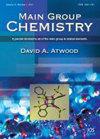微分析法验证细菌IAA估计作为一种新的微调PGPR筛选方法
IF 1
4区 化学
Q3 CHEMISTRY, MULTIDISCIPLINARY
引用次数: 0
摘要
促进植物生长的根瘤菌(PGPR)产生的吲哚-3乙酸(IAA)的检测和定量依赖于标准的文献完备的测定方法,这仍然是耗时、费力和昂贵的。这些缺点使人们对经济可靠的分析方法产生了兴趣。本工作的目的是验证和标准化一种快速、可靠、经济高效的微量测定方法,用简单的微孔板法定量细菌产生的IAA。为了验证IAA微孔板法的准确性,采用常规IAA估计法和IAA微孔法两种方法对不同属的细菌样品进行检测。微量分析显示,使用的细菌上清体积和萨尔科夫斯基试剂体积显著减少约92.5%。它比传统的约56%便宜得多。新进行的微孔板检测快了23倍。对13株菌株进行IAA定量分析,结果显示,内生芽孢杆菌和toyonensis产生的IAA浓度最高,分别为23.64±0.003μg/ml和23.35±0.006μg/ml。两种方法获得的数据高度相关,r值为0.979。微分析提供了同时读取所有样品光密度的能力,因为细菌上清液和萨尔科夫斯基试剂的使用体积被最小化,将混合物放置在96孔微孔板中,这大大减少了所需的劳动力。此外,IAA微板法的应用大大减少了萨尔科夫斯基试剂在环境中的试剂浪费和毒性危害,因此,根据美国环境保护局(EPA)的绿色化学概念,我们可以将其归类为生态友好型。IAA微法是一种可靠、快速、经济、环保的方法,可通过微孔板筛选23种以上的植物促生长菌株。它可以作为常规研究工具替代传统的IAA测定。本文章由计算机程序翻译,如有差异,请以英文原文为准。
Microassay validation for bacterial IAA estimation as a new fine-tuned PGPR screening assay
The detection and quantification of Indole -3 Acetic Acid (IAA) produced by Plant growth promoting rhizobacteria (PGPR) rely on a standard well-documented assay, which remains time-consuming, laborious, and costly. These drawbacks led to sway interest to economic and reliable assays. The aim of this work is to validate and standardize a fast, reliable, and cost-effective microassay to quantify IAA produced by bacteria with an easy microplate method. In order to validate the accuracy of the IAA microplate assay, bacterial samples from different genera were assayed using two methods: the conventional IAA estimation assay and the IAA micro- assay. The microassay shows a prominent reduction in used bacterial supernatant volume as well as Salkowski reagent volume of about 92.5%. It is considerably cheaper than the conventional one of around 56%. The newly performed microplate assay is 23 times faster. The result of IAA quantitative analysis for 13 bacterial strains showed that Bacillus muralis and Bacillus toyonensis produced the highest IAA concentration (23.64±0.003μg/ml and 23.35±0.006μg/ml, respectively). The obtained data from both methods were highly correlated with an R-value of 0.979. The microassay offers the ability to read the optical density of all samples simultaneously since used volumes of bacterial supernatants and Salkowski reagent were minimized to place the mixture in 96-well microplates, which reduces greatly required labor. Furthermore, the application of the IAA micro-plate assay reduces drastically the reagent waste and toxicity hazard of Salkowski reagent in the environment, thus, we can classify it as eco-friendly respecting the Green Chemistry concept according to Environmental Protection Agency (EPA). The IAA microassay is a, reliable, rapid and cost-effective and eco-friendly method to screen plant growth promoting potential of more than 23 bacterial strains by microplate. It could be an alternative for the conventional IAA assay as a routine research tool.
求助全文
通过发布文献求助,成功后即可免费获取论文全文。
去求助
来源期刊

Main Group Chemistry
化学-化学综合
CiteScore
2.00
自引率
26.70%
发文量
65
审稿时长
>12 weeks
期刊介绍:
Main Group Chemistry is intended to be a primary resource for all chemistry, engineering, biological, and materials researchers in both academia and in industry with an interest in the elements from the groups 1, 2, 12–18, lanthanides and actinides. The journal is committed to maintaining a high standard for its publications. This will be ensured by a rigorous peer-review process with most articles being reviewed by at least one editorial board member. Additionally, all manuscripts will be proofread and corrected by a dedicated copy editor located at the University of Kentucky.
 求助内容:
求助内容: 应助结果提醒方式:
应助结果提醒方式:


